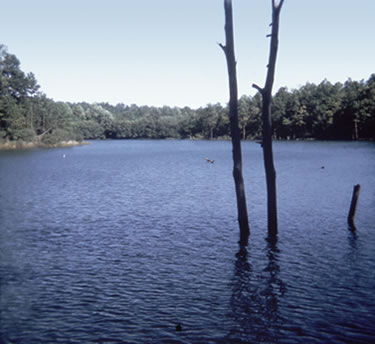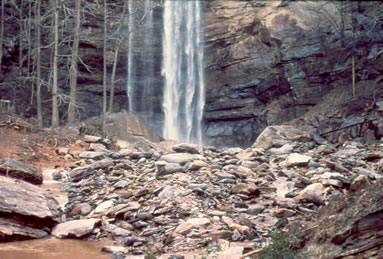In Darkness and Dawn, The story of God’s faithfulness at Toccoa Falls College
In 1919, four years after fire destroyed Haddock Inn and nearly destroyed Toccoa Falls College, famed evangelist and composer Paul Rader penned the words of the well-known hymn, “Only Believe.†As he stood looking over the campus, the faith and courage of the students and faculty moved Rader. The last stanza of the hymn affirms God’s presence in times of darkness and dawn.
More than 60 years later, that same faith and courage was seen again in the lives of those affected by the devastating flood, which swept through the college’s campus on November 6, 1977. The following is a record God’s faithfulness. It also is a testimony of faith under severe trial—the faith of the college’s students, faculty, staff and the surrounding community, which asked over and over again: “How can we help?†The spontaneous response by those living in the nearby city of Toccoa was overwhelming. Many  people opened their homes and hearts to the needs of the temporarily crippled college.
people opened their homes and hearts to the needs of the temporarily crippled college.
God’s sovereignty in this tragedy was evident. Holding back the surging waters of the Kelly Barnes Lake would have been no great thing for a great God. But allowing the waters to be released provided the right opportunity for His greatness to be revealed in ways that from a human perspective seemed impossible.
What Happened The Night The Dam Broke
Toccoa, Ga. — The earthen dam above beautiful Toccoa Falls had been taken for granted for most of its 40 years. Through other winter and spring rains that come annually to the North Georgia mountains, the tree covered dam had held.
About 1:30 a.m. Sunday, after days of torrential rains, the dam started to leak. Groaning under the pressure of 129 million gallons of water, the leak became a breach, and the dam washed away, sending a 30-foot wall of water roaring through the trailer park and Bible college in the peaceful valley below.
In a few horrifying minutes, at least 39 men, women, and children died in the onslaught of rushing water, wreckage and mud.
Sometime after midnight, Eldon Elsberry, Ron Ginther, Bill Ehrensberger, and David Fledderjohann, 
started knocking on the doors of trailers to warn residents of the rising waters. Only Elsberry and Ginther would survive the night.
With a crashing sound like a thunderstorm, a wedge-shaped wall of water some 30 feet high poured down the creek and shot over Toccoa Falls, tumbling huge boulders and tree trunks before it.
The footbridge at the base of the falls vanished, as did the road that leads down the shoulder of the campus and across the creek to some recreational buildings. Just past the road, the creek makes a sharp left turn. On the outside of the bend sits Forrest Hall, with the windows of its basement rooms facing the stream. It was in that basement that three young men died. . . . Sweeping past Forrest Hall, the water churned through several houses, moved slightly to the right, or south, and washed headlong into [an area once known as] Trailerville.
 [A short distance away] it was the highway bridge, straddling the creek just below the city’s hospital that contained the flood and kept it from wreaking havoc the length of the creek, Corps of Engineers workers said. Debris piled up against the bridge created a small dam, slowing the onrushing tide. (39 Die in Toccoa’s Raging Nightmare.†The Atlanta Journal, November 7, 1977.)
[A short distance away] it was the highway bridge, straddling the creek just below the city’s hospital that contained the flood and kept it from wreaking havoc the length of the creek, Corps of Engineers workers said. Debris piled up against the bridge created a small dam, slowing the onrushing tide. (39 Die in Toccoa’s Raging Nightmare.†The Atlanta Journal, November 7, 1977.)
(Adapted from the booklet In Darkness and Dawn published by Toccoa Falls College Press)
| Section 2, Afterwards |
